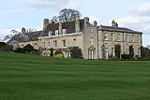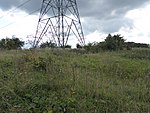Little Bytham railway station
1853 establishments in EnglandDisused railway stations in LincolnshireFormer Great Northern Railway stationsPages with no open date in Infobox stationRailway stations in Great Britain closed in 1959 ... and 2 more
Railway stations in Great Britain opened in 1853Use British English from August 2015

Little Bytham railway station was a station in Little Bytham, Lincolnshire on the Great Northern Railway main line. It closed in 1959. The Midland and Great Northern Joint Railway crossed just north of the station. The GNR were given powers to build a junction but never did so. The nearest station on the M&GNR was at Castle Bytham.From 1857 to 1884, Little Bytham was the junction for the Edenham & Little Bytham Railway branch line to Edenham. The public house now called The Willoughby Arms, but then The Steam Engine was built as the terminus, although the track crossed into the GNR goods yard for interchange purposes.
Excerpt from the Wikipedia article Little Bytham railway station (License: CC BY-SA 3.0, Authors, Images).Little Bytham railway station
Station Road, South Kesteven Careby Aunby and Holywell
Geographical coordinates (GPS) Address External links Nearby Places Show on map
Geographical coordinates (GPS)
| Latitude | Longitude |
|---|---|
| N 52.744 ° | E -0.4935 ° |
Address
Little Bytham
Station Road
NG33 4RA South Kesteven, Careby Aunby and Holywell
England, United Kingdom
Open on Google Maps









